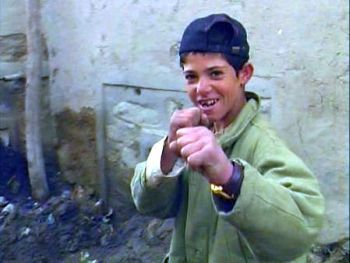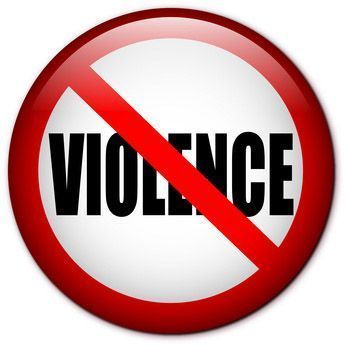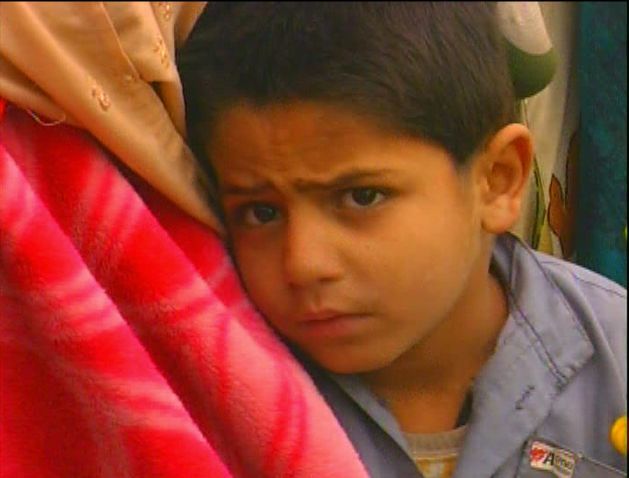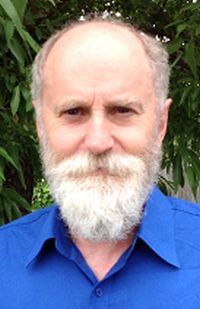
Publisher:
Bonnie King
CONTACT:
Newsroom@Salem-news.com
Advertising:
Adsales@Salem-news.com

~Truth~
~Justice~
~Peace~
TJP
Oct-09-2013 01:53

 TweetFollow @OregonNews
TweetFollow @OregonNews
Human Violence: Understanding it... Ending it
Robert J. Burrowes Salem-News.comEnding human violence will require us to stop terrorizing our children, giving violent individuals support and safe spaces in which to feel their suppressed fear consciously, and changing institutions, such as the legal system, so that we no longer use fear to try to 'modify' behavior.
 Boy in Kabul, Afghanistan personifies the decades of violence and fear that define the capital city of Afghanistan. 2006 photo by Tim King Salem-News.com |
(TASMANIA, Aust.) - Violence is the most pervasive and destructive human problem of them all. It has been present for as long as history records. We are mired in it, all over the world, every day of our lives. It now threatens to obliterate us from the historical record within decades, if not sooner.

What is violence? Let me define this phenomenon more precisely so that we might tackle it more effectively.
Violence is social interference in the genetically programmed feelings, thoughts, sensing and/or behavior of another organism. It might be inflicted by an individual or an institution.
All direct violence inflicted by individuals is a dysfunctional attempt to get attention for something they need including, especially, the need for attention itself, although this need remains unconscious to them. Violence includes all forms of controlling behavior such as, for example, that exercised by those in authoritative positions including political leaders, military officers, business/bureaucratic managers, teachers, parents and slavemasters. Violence is simply an extreme form of attention-seeking behavior for those individuals who are no longer able to pay attention to themselves. Controlling or directing a subordinate becomes a perverse way of getting attention for oneself and those adults in subordinate positions themselves will invariably find someone else, especially children, to control.
 Kabul, Afghanistan 2007. Photo by Tim King Salem-News.com |
During childhood, each child is subjected to an endless and terrifying onslaught of violence. Most of this violence is 'invisible' in the sense that it would not normally be considered violent. Examples of invisible violence include not listening to or trusting a child, requiring its obedience, as well as lying to, bribing, insulting and humiliating it. But it gets worse than this. The onslaught of invisible violence is compounded by the 'utterly invisible' violence of terrorizing the child out of having its feelings in response to this violence; for example, by comforting or distracting a child that is crying, reassuring a child that is scared, and frightening a child out of being angry. See 'Why Violence?' http://tinyurl.com/whyviolence The child ends up frightened to pay attention to itself and trained to pay inappropriate attention to others.
The combined outcome of all of this violence leaves the child with a lifetime legacy of suppressed fear which has a disastrous impact on the intellectual and emotional capacities of the individual and, therefore, the behavior that is driven by these. These outcomes include the fact that the individual is made substantially less intelligent that it would have been otherwise.
Let me illustrate this point with an everyday example. The overwhelming evidence, which is readily available to anyone who seeks it, clearly indicates that ecological sustainability and human health are most effectively nurtured by a diet of organically or biodynamically grown, fresh, whole (unprocessed) vegetarian food that is healthily prepared and consumed in modest quantities. However, most 'industrialized' human beings, including those who are supposedly 'intelligent', eat processed food-like substances that fall well outside these parameters.
Why does fear prevent an 'intelligent' individual acting on sound evidence? There are many reasons. First, fear distorts sensory perception; for example, taste buds become addicted to sweet, salty and/or fatty foods. Second, fear interferes with analytical capacity, skewing the individual's judgment away from 'unpalatable' conclusions. Third, fear generates compulsive behaviors (including addictions and other eating disorders) that are extremely difficult to break and which cannot be broken by intellectual effort alone. And fourth, fear interferes with emotional and physical responses that signal damaging behavior; for example, substances like milk, coffee, cola drinks, alcohol and tobacco have a soothing or stimulating effect which overrides feelings and physical sensations that signal their damaging impact.
More profoundly, this invisible and utterly invisible violence, and the monumental unconscious fear that it generates, interferes with other emotional responses in ways that are devastating for the individual, society and the Earth. For example, anger is the quality, given to the individual by evolution, for communicating to the individual that it is being threatened or attacked in some way (whether by a more 'subtle' abuse or in an explicitly violent manner), while also giving it the power to respond to this threat/attack. The individual who is not afraid to be angry, will respond immediately, powerfully and, in virtually all cases, nonviolently to this threat or attack, warding off the attacking individual, for example, simply by clearly showing their anger (which is a defense in itself).
In contrast, the individual who is afraid to be angry will either retreat inappropriately, use violence to 'counter-attack' (including in situations in which the 'threat' or 'attack' is actually an outcome of their own projection) or subsequently engage in vicarious and powerless acts of rebellion or interference.
What is a powerless act of rebellion? It is an act that is harmful to themselves, others and/or the Earth that is done in a way that allows the individual to either avoid responsibility (as would occur, for example, by dropping an item of rubbish or by starting a wildfire where no one will see them) or to delude themselves that they will not be held accountable (as occurs, for example, when someone pretends there is no connection between their unhealthy diet and their ill-health).
Similarly, an individual might engage in a powerless act of interference in the life of another as an unconscious manifestation of their suppressed anger. For example, if someone is angry because they feel they are being forced to clean up after someone else, but this anger is fearfully suppressed and cannot be acted upon by raising and dealing with the conflict openly, then the person might half clean up something but then leave all of the cleaning equipment in the way of the other person in an attempt to powerlessly 'force' that person to, in effect, clean up after them.
More interestingly perhaps, an individual might engage in a powerless act of interference in their own life as an unconscious manifestation of their suppressed anger. How might they do this? And why? A person might get in their own way by, for example, being untidy, disorganised or by persisting in using dysfunctional equipment (rather than having it repaired). And they do this as a projection of one or both of their parents 'getting in my way' when they were a child. This 'getting in my way' usually occurs when the child is 'held to account' for making mistakes (that is, being inappropriately and unfairly treated as dysfunctional) but is not allowed to get angry about this unjust response to its 'mistakes'. So, scared out of being angry, the child (now an adult) wants to 'insist' on doing what they want (dysfunctional or otherwise) because this represents them trying to learn to do things for themselves (and 'getting away with' making mistakes in doing so) when they were a child. Unfortunately, they are now trapped in this behaviour pattern because they cannot have the feelings, which are deeply suppressed, that would allow them to restore more functional behaviour.
Another damaging outcome of the violence described above is that violence becomes deeply but invisibly entrenched throughout society and this is indeed evident in all of its structures and institutions, including the economy (which ensures ongoing accumulation of wealth by the relative few through exploitation of the vulnerable many, as well as nature); the education system; the medical and pharmaceutical industries; the media industry; the police, legal and prison systems; and the military defense system. (For brief critiques of these structures, see 'The Flame Tree Project To Save Life on Earth' http://tinyurl.com/flametree) Clearly, if violence is to be ended, then all of these structures must be dismantled and replaced with small-scale local structures that do not have violence built into them.
In summary, the person who uses violence is not angry; they are terrified. To the inexperienced or fearful eye, of course, this is not apparent. Ending human violence will require us to stop terrorizing our children, giving violent individuals support and safe spaces in which to feel their suppressed fear consciously, and changing institutions, such as the legal system, so that we no longer use fear to try to 'modify' behavior.
If you wish to join the worldwide movement to end all violence and avert extinction at our own hand, you can sign online 'The People's Charter to Create a Nonviolent World' http://
Biodata: Robert J. Burrowes has a lifetime commitment to understanding and ending human violence. He has done extensive research since 1966 in an effort to understand why human beings are violent and has been a nonviolent activist since 1981. He is the author of 'Why Violence?' http://tinyurl.com/whyviolence His email address is flametree@riseup.net and his website is at http://robertjburrowes.
Robert J. Burrowes
P.O. Box 68
Daylesford
Victoria 3460
Australia
Email: flametree@riseup.net
Websites: http://
http://tinyurl.com/flametree (Flame Tree Project)
http://tinyurl.com/whyviolence ('Why Violence?')
http://anitamckone.wordpress.
http://robertjburrowes.
 |
About Robert J. Burrowes
Robert Burrowes has a lifetime commitment to understanding and ending human violence. He has done extensive research since 1966 in an effort to understand why human beings are violent. He has been a nonviolent activist since 1981.
Robert is the author of 'Why Violence?' -
tinyurl.com/whyviolence
 |
 |
 |
Articles for October 8, 2013 | Articles for October 9, 2013 | Articles for October 10, 2013
Quick Links
DINING
Willamette UniversityGoudy Commons Cafe
Dine on the Queen
Willamette Queen Sternwheeler
MUST SEE SALEM
Oregon Capitol ToursCapitol History Gateway
Willamette River Ride
Willamette Queen Sternwheeler
Historic Home Tours:
Deepwood Museum
The Bush House
Gaiety Hollow Garden
AUCTIONS - APPRAISALS
Auction Masters & AppraisalsCONSTRUCTION SERVICES
Roofing and ContractingSheridan, Ore.
ONLINE SHOPPING
Special Occasion DressesAdvertise with Salem-News
Contact:AdSales@Salem-News.com

googlec507860f6901db00.html



Terms of Service | Privacy Policy
All comments and messages are approved by people and self promotional links or unacceptable comments are denied.
[Return to Top]
©2025 Salem-News.com. All opinions expressed in this article are those of the author and do not necessarily reflect those of Salem-News.com.